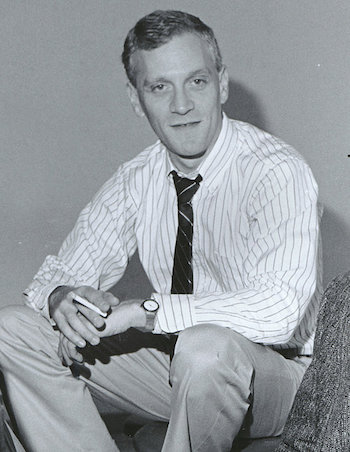Television Review: “Howard” — Homage to One of the Greatest Artists of the 20th Century
By Sarah Osman
The great lyricist behind the Disney renaissance receives a moving tribute.

Lyricist Howard Ashman. Photo: Howard Ashman.com
For any millennial or Gen Zer, the Disney films released in the early ’90s were a collective and joyous rite of passage. Around the world, songs such as “Part of Your World” and “Be Our Guest” are still sung and are rejuvenated through remakes of the original films. These musical gems were the masterwork of the late, great Howard Ashman (1950-1991) and his songwriting partner, Alan Menken. While Menken has gone on to work on multiple Disney films, Ashman’s life was tragically cut short. He was diagnosed with HIV and died shortly after, at the age of 40.
Directed by Don Hahn, who also helmed the 2009 documentary Waking Sleeping Beauty, another look at the Disney renaissance, Howard (streaming on Disney Plus) is an intimate examination of the lyricist’s life. Ashman was a storyteller from the beginning, enchanting his younger sister with tales as they grew up in Baltimore. The first half of the film focuses on Ashman’s childhood, culminating with his early rise in the ’70s and early ’80s theater scene in New York City. Ashman, and his then lover Stuart White, worked for the WPA theater, where they put on a variety of avant-garde shows. During this time, Ashman met Alan Menken, and the team created the now revered musical, Little Shop of Horrors. Even though Little Shop of Horrors was a success, Ashman’s life wasn’t coming up roses. His relationship with White fell apart and his next musical, Smile, was a flop.
While it’s interesting to learn about Ashman’s fledgling career (particularly the mythos that drove Little Shop of Horrors), the first half of the film trudges a bit — it is too straightforward. Hahn doesn’t show any of the interviewees on camera. Instead, he elects to have audio from Ashman’s friends and family come in over old stock footage and pictures. While this approach is meant to be a twist on the traditional documentary, it doesn’t work. Not seeing faces creates a distance between interviewees and viewers — it has the effect of making the documentary feel less personal. The first half of the movie ends up coming off like a Powerpoint presentation, more college lecture rather than an enticingly dramatic presentation of a life story.
The second half of the film picks up thanks to the addition of video and film clips. After the disaster of Smile, Ashman and Menken decide to head to the West Coast, where they begin work on the new iteration of the Broadway musical: the Disney animated film. In these clips, we see Ashman suggest that Sebastian should be Jamaican to best fit “Under the Sea” and that Ursula should be modeled after the drag queen Divine. Watching Ashman carefully guide his singers through what would become classic Disney songs is nothing short of magical. These scenes highlight the dazzling power of Ashman’s genius and talent.
While working on The Little Mermaid and Beauty and the Beast, Ashman learned that he had HIV. He decided to keep the results a secret from the morally upright corporate powers-that-be at Disney. During this time, many of Ashman’s friends perished from the ravenous disease; it’s heartbreaking to watch Ashman create tunes while battling the illness. In one deeply affecting scene, Ashman writes “Prince Ali” in a hospital bed, with Menken at his side.
At no point does Hahn shy away from the AIDS crisis. It’s infuriating now to realize the crushing power of the AIDS stigma. Had the political and public response been more engaged sooner, Ashman might still be alive, penning more wonderful Disney songs. So many gifted and kind people were lost during the AIDS crisis — Howard is a harsh reminder of how a plague can decimate a community. (A point that takes on troubling resonance during the COVID pandemic.) Interestingly, Hahn muses that Ashman might have been criticizing the treatment of AIDS patients in Beauty and the Beast‘s “The Mob Song.” While there can’t be any certainty about this, it is possible to draw parallels between “The Mob Song” and the AIDS crisis, which only strengthens Ashman’s legacy as a serious storyteller, an artist who found a place for protest in his creations.
Howard will undoubtedly appeal to musical and Disney fans. But it is more than that: the film is also a fascinating look at a man that I consider to be one of the 20th century’s greatest artists. And it is remarkable that a documentary that focuses so determinedly on the tragedy of AIDS is streaming on Disney+. It is an encouraging sign of how far we have come, which makes it the perfect way to honor the man who gave a mermaid her voice and a beast his soul.
Sarah Mina Osman is a writer living in Los Angeles. She has written for Young Hollywood and High Voltage Magazine. She will be featured in the upcoming anthology Fury: Women’s Lived Experiences under the Trump Era.
